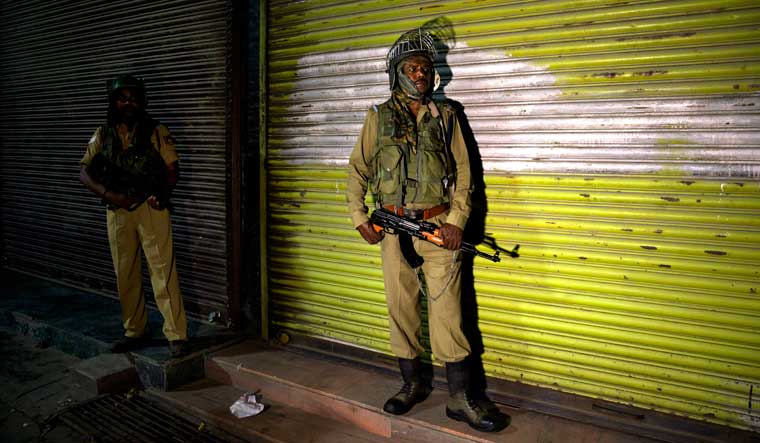On Monday, the government on Monday moved a bill proposing bifurcation of the state of Jammu and Kashmir into two union territories—the Jammu and Kashmir division and Ladakh.
ALSO READ
- Months after taking office, J&K MLAs receive first salary; but they aren't happy
- Modi inaugurates Jammu Railway Division, J&K LG calls Chenab railway bridge a symbol of India’s engineering excellence
- PM Modi to inaugurate Jammu railway division today
- J&K: Banihal bypass on Jammu-Srinagar highway complete; 4-lane traffic to open within 15 days
- First trial train runs on Katra-Banihal section, paving way for rail services to Kashmir
- J&K: Four soldiers killed as Army vehicle plunges into gorge in Bandipora
Making the announcement in Rajya Sabha, Union Home Minister Amit Shah said the UT in Ladakh will have no legislature like Chandigarh while the other UT of Jammu and Kashmir will have a legislature like Delhi and Puducherry. Shah introduced the Jammu and Kashmir Reorganisation bill.
Acrimonious scenes were seen in the house soon after the announcement by the home minister.
What does the presidential order entail?
President Ram Nath Kovind in "concurrence" with the "Jammu and Kashmir government" promulgated Constitution (Application to Jammu and Kashmir) Order, 2019 on Monday which states that provisions of the Indian Constitution are applicable in the state.
The president issued Constitution (Application to Jammu and Kashmir) Order, 2019 which comes into force "at once", and shall "supersede the Constitution (Application to Jammu and Kashmir) Order, 1954".
"All the provisions of the Constitution" shall apply in relation to the state of Jammu and Kashmir, it said.
The government has added in the Article 367 of the Constitution a clause 4 which makes four changes.
"Reference to this Constitution or to the provisions thereof shall be construed as references to the Constitution or the provisions thereof as applied in relations to Jammu and Kashmir," it said.
The order said references to the person for the time being recognised by the president on the recommendation of the Legislative Assembly of the State as the Sadar-i-Riyasat of Jammu and Kashmir, acting on the advice of the Council of Ministers of the state for the time being in office, shall be construed as references to the Governor of Jammu and Kashmir.
References to the Governor of Jammu and Kashmir shall be construed as including references to the Governor of Jammu and Kashmir acting on the advice of his Council of Ministers, it said.
In proviso to clause (3) of Article 370 of this Constitution, the expression "Constituent Assembly of the State referred to in clause (2)" shall read "Legislative Assembly of the State", it said.
What is the history of Article 370?
The Article 370's history is linked to Maharaja Hari Singh, and his turning to the Indian government when faced with aggression from tribesmen supported by an army from Pakistan. In return, he signed the Instrument of Accession in 1947. Sheikh Abdullah, who was appointed prime minister of Jammu and Kashmir, in 1947, drafted the Article 370 provisions, which was deemed “temporary” inspite of pushback from Abdullah.
What does Article 370 entail?
The provisions of Article 370 ensure that the Parliament can legislate in J&K only on finance, defence, communication and external affairs. The provisions result in that the state residents live under largely separate laws from the rest of India. Outsiders cannot buy land or own property in the state; Article 35A deals with their rights and privileges, and gives that power to the legislature. The Parliament cannot redraw the boundaries of the state.
What legal quagmire awaits the removal of Article 370?
It was Jan Sangh founder Syama Prasad Mukherjee who, in the 1950s, argued for 'one nation, one law, one flag'. In the simplest of technical terms, the presidential order would suffice. Article 370 removal via presidential order is supposed to be backed up by the Jammu and Kashmir Constituent Assembly. The relevant clause goes: Provided that the recommendation of the Constituent Assembly of the State referred to in clause (2) shall be necessary before the president issues such a notification. But, since the assembly ceased to exist from 1956, the question is whether the Parliament needs the permission of the state assembly, which was dissolved a year before. Questions remain: The Centre cited agreement from the Governor Satyapal Malik as agreement of the state. Will that suffice? Will that scrapping still require a constitutional amendment?
-Inputs from PTI


